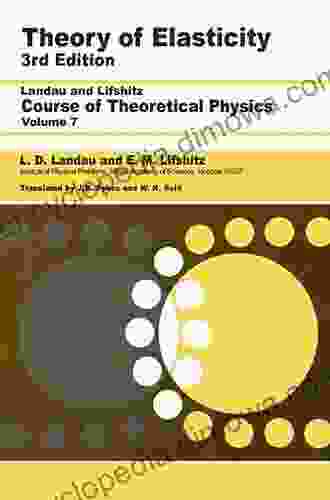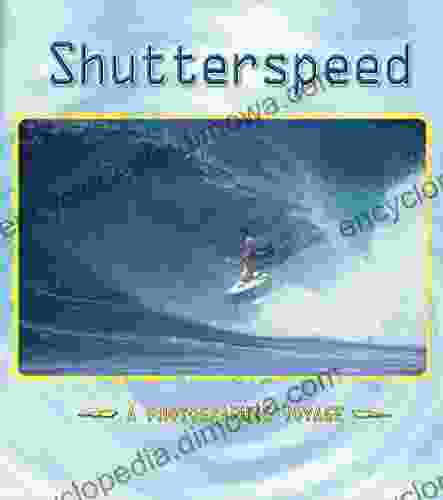Theory and Measurement Techniques: A Comprehensive Guide

5 out of 5
| Language | : | English |
| File size | : | 29454 KB |
| Text-to-Speech | : | Enabled |
| Screen Reader | : | Supported |
| Enhanced typesetting | : | Enabled |
| Print length | : | 1017 pages |
Research is a systematic and organized process of inquiry that aims to generate new knowledge or confirm existing knowledge. It involves the collection, analysis, and interpretation of data to answer research questions or test hypotheses.
Theory and measurement techniques are two essential components of research. Theory provides a framework for understanding the research problem and developing hypotheses. Measurement techniques allow researchers to collect data and test hypotheses.
This article provides a comprehensive overview of the theory and measurement techniques used in research. It covers a wide range of topics, including research design, data collection, data analysis, and statistical methods.
Research Design
Research design is the blueprint for a research study. It specifies the research question or hypothesis, the population to be studied, the data to be collected, and the methods to be used to collect and analyze the data.
There are a number of different research designs, including:
- Experimental design: In an experimental design, the researcher manipulates one or more independent variables and observes the effect on one or more dependent variables.
- Quasi-experimental design: In a quasi-experimental design, the researcher cannot manipulate the independent variable, but can observe the effect of naturally occurring events.
- Non-experimental design: In a non-experimental design, the researcher does not manipulate the independent variable and observes the relationship between variables as they naturally occur.
The type of research design that is used will depend on the research question or hypothesis, the population to be studied, and the resources available.
Data Collection
Data collection is the process of gathering information from the population of interest.
There are a number of different data collection methods, including:
- Surveys: Surveys are a popular data collection method because they are relatively easy to administer and can be used to collect data from a large population.
- Interviews: Interviews are a more in-depth data collection method than surveys, but they can be more time-consuming and expensive.
- Observations: Observations involve watching and recording the behavior of people or animals.
- Document analysis: Document analysis involves examining written or visual documents.
The type of data collection method that is used will depend on the research question or hypothesis, the population to be studied, and the resources available.
Data Analysis
Data analysis is the process of cleaning, organizing, and interpreting data.
There are a number of different data analysis methods, including:
- Descriptive statistics: Descriptive statistics summarize the data in a concise and understandable way.
- Inferential statistics: Inferential statistics allow researchers to make inferences about the population based on the data.
- Qualitative data analysis: Qualitative data analysis involves interpreting the meaning of non-numerical data.
The type of data analysis method that is used will depend on the research question or hypothesis, the type of data that was collected, and the resources available.
Statistical Methods
Statistical methods are a set of tools that can be used to analyze data.
There are a number of different statistical methods, including:
- Hypothesis testing: Hypothesis testing is a statistical method that allows researchers to test the validity of a hypothesis.
- Regression analysis: Regression analysis is a statistical method that allows researchers to predict the value of one variable based on the values of other variables.
- Analysis of variance: Analysis of variance is a statistical method that allows researchers to compare the means of two or more groups.
The type of statistical method that is used will depend on the research question or hypothesis, the type of data that was collected, and the resources available.
Theory and measurement techniques are essential components of research. Theory provides a framework for understanding the research problem and developing hypotheses. Measurement techniques allow researchers to collect data and test hypotheses.
This article has provided a comprehensive overview of the theory and measurement techniques used in research. By understanding the different theories and measurement techniques, researchers can design and conduct studies that will generate valid and reliable results.
5 out of 5
| Language | : | English |
| File size | : | 29454 KB |
| Text-to-Speech | : | Enabled |
| Screen Reader | : | Supported |
| Enhanced typesetting | : | Enabled |
| Print length | : | 1017 pages |
Do you want to contribute by writing guest posts on this blog?
Please contact us and send us a resume of previous articles that you have written.
 Book
Book Novel
Novel Page
Page Chapter
Chapter Text
Text Story
Story Genre
Genre Reader
Reader Library
Library Paperback
Paperback E-book
E-book Magazine
Magazine Newspaper
Newspaper Paragraph
Paragraph Sentence
Sentence Bookmark
Bookmark Shelf
Shelf Glossary
Glossary Bibliography
Bibliography Foreword
Foreword Preface
Preface Synopsis
Synopsis Annotation
Annotation Footnote
Footnote Manuscript
Manuscript Scroll
Scroll Codex
Codex Tome
Tome Bestseller
Bestseller Classics
Classics Library card
Library card Narrative
Narrative Biography
Biography Autobiography
Autobiography Memoir
Memoir Reference
Reference Encyclopedia
Encyclopedia Mira K
Mira K Daniel Alpay
Daniel Alpay Nolon Stacey
Nolon Stacey Susanne Winnacker
Susanne Winnacker Royston Wood
Royston Wood Randi Reisfeld
Randi Reisfeld A Albert Klaf
A Albert Klaf Cindy Maddox
Cindy Maddox Nat Robinson
Nat Robinson 2003rd Edition Kindle Edition
2003rd Edition Kindle Edition Philip Oltermann
Philip Oltermann Yolande Strengers
Yolande Strengers Cameron M Smith
Cameron M Smith Kevin Randle
Kevin Randle Joanna Hathaway
Joanna Hathaway Yuri Raydugin
Yuri Raydugin Samuel Hall Young
Samuel Hall Young John K Fulton
John K Fulton Ann Slavick
Ann Slavick Rehan Khan
Rehan Khan
Light bulbAdvertise smarter! Our strategic ad space ensures maximum exposure. Reserve your spot today!

 Rudyard KiplingQuantum Electrodynamics Volume Course Of Theoretical Physics: Unlocking the...
Rudyard KiplingQuantum Electrodynamics Volume Course Of Theoretical Physics: Unlocking the...
 Holden Bell**Embark on a Literary Journey: The Haunting Tale of "The Hunger Between Us"...
Holden Bell**Embark on a Literary Journey: The Haunting Tale of "The Hunger Between Us"... Anthony BurgessFollow ·4k
Anthony BurgessFollow ·4k Ashton ReedFollow ·16.3k
Ashton ReedFollow ·16.3k Dennis HayesFollow ·7.9k
Dennis HayesFollow ·7.9k Brayden ReedFollow ·17.2k
Brayden ReedFollow ·17.2k Isaac BellFollow ·17.4k
Isaac BellFollow ·17.4k Edgar Allan PoeFollow ·7.6k
Edgar Allan PoeFollow ·7.6k Craig BlairFollow ·17.4k
Craig BlairFollow ·17.4k Henry JamesFollow ·14.2k
Henry JamesFollow ·14.2k

 Zadie Smith
Zadie SmithWork in Early Modern Italy 1500-1800: A Captivating...
: Unraveling the Enigmatic...

 Noah Blair
Noah BlairIceland's Most Unusual Museums: A Quirky Guide to the...
Iceland is a land of natural wonders, from...

 Ross Nelson
Ross NelsonShutterSpeed - A Photographic Voyage
Embark on an Unforgettable Photographic...

 Wayne Carter
Wayne CarterUnveiling the Secrets: Detailed Streamside Field Guide to...
Embark on an unforgettable fly fishing...

 Patrick Rothfuss
Patrick RothfussHannah Montana: Reality Check Junior Novel 19
The Ultimate Behind-the-Scenes Adventure for...

 Chad Price
Chad PriceCreate More Than 30 Projects from Vintage Pieces: Unleash...
Embrace the Art of...
5 out of 5
| Language | : | English |
| File size | : | 29454 KB |
| Text-to-Speech | : | Enabled |
| Screen Reader | : | Supported |
| Enhanced typesetting | : | Enabled |
| Print length | : | 1017 pages |








